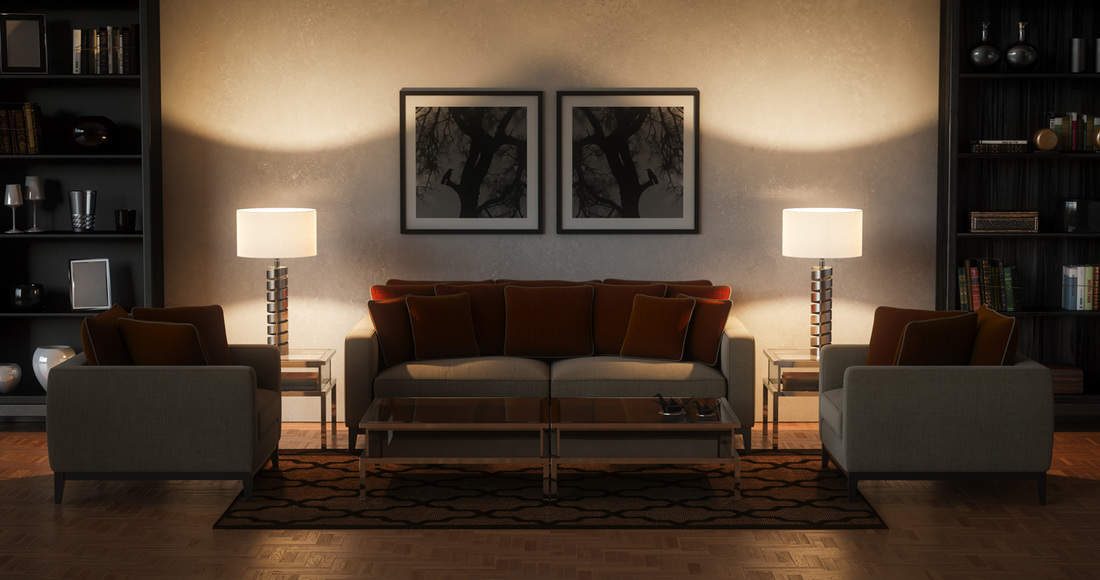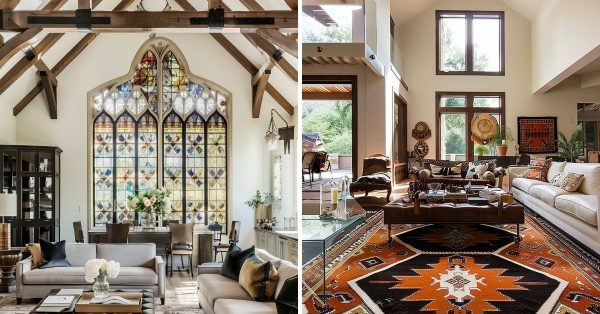Lighting sets the atmosphere in your living room. Whether you are spending an evening curled up in your favorite chair absorbed in a book, engaged in lively conversation with close friends, or cozied up on the couch for a movie night, your living room must be prepared to offer the lighting required for all sorts of situations. One way to meet the various lighting needs of your living space is through floor lamps. Floor lamps certainly are a good thing, but how many should you have in your living room? We've researched this question thoroughly so we can shed some light on the topic for you.
When layered with other types of lighting, generally, one or two floor lamps should suffice in a living room. Floor lamps can be both functional and design elements in a living room, meeting a specific lighting need or serving as a focal point. If you use more than one floor lamp in the room, make sure they aren't competing with each other visually by keeping them about the same height. Matching floor lamps flanking a sofa is also a great look.
To better understand how to effectively use floor lamps, it is important to talk about a lighting design concept called layering. Keep reading to learn more about how to use floor lamps to layer lighting in your living room. We will also answer some other common questions about living room floor lamps.

Layering Living Room Lighting with Floor Lamps
No matter the size or shape of your space, learning how to layer lighting can give your living room a warm, cozy, and comfortable feel. Design experts largely agree that there are three types of lighting needed in a room for aesthetic and functional purposes. Let's talk about these layers and how we can achieve them using floor lamps and other light fixtures in your living room.

We may include affiliate links and curated AI content to highlight top design styles.
Ambient Lighting with Floor Lamps
The first layer to consider is ambient lighting. This is the most general kind of light and includes natural light and various ceiling fixtures. Think of it as your base layer. Most typically, ambient light comes from overhead light fixtures and broadly casts light around the room. If you don't have overhead lighting in your living room and aren't inclined to permanently install it, you can rely on floor lamps to provide your base layer of light.
A tower floor lamp is perfect for casting ambient light in a living room. Click here to view one on Amazon. Other good floor lamp choices for the ambient light layer are torchiere lamps that cast light upward toward the ceiling or a tree lamp with branches that can point light in different directions.
Task Lighting with Floor Lamps
The second layer of lighting in your living room is the always practical task lighting. Task lighting is just what it sounds like, lighting focused on a specific place for a specific purpose. The most common type of task lighting in a living room is a lamp positioned for reading. Floor lamps with opaque shades or adjustable arms work well as task lighting since the light can be easily focused where you need it. Click here to see one we like on Amazon.
Accent Lighting with Floor Lamps
Accent lighting is the third layer of lighting to add to your living room. Think of accent lighting as artful lighting that enhances the mood of the room. Practically, it highlights certain features and/or takes attention away from other parts of the room. You might use accent lighting to illuminate artwork on the wall or an architectural feature of the room, define a conversation corner, or highlight a houseplant.
This layer of lighting is typically achieved through picture lights, niche lighting, wall sconces, uplights, or even candle light, but don't discount floor lamps from this layer. One way to do this is with a torchiere floor lamp. If well-positioned, such a lamp can throw light on a feature of interest. Click here to see a classic torchiere floor lamp on Amazon.
Decorative Lighting with Floor Lamps
Earlier, we said that designers agree on three layers of lighting, but many also include a fourth: the decorative layer. Decorative lighting can take the form of a statement lamp. From quirky and fun to ornate and formal, decorative lighting enhances the aesthetic of the living room. A decorative fixture may very well serve the purpose of one of the other three layers as well. Floor lamps come in all varieties, many of which have decorative features built into their design.
Click here to find this decorative crystal and brass finish lamp on Amazon.
More Living Room Floor Lamp Tips
Now that you've considered the layers of lighting your living room needs and how floor lamps can meet your needs, here are a few more guiding principles:
- Use a floor lamp to brighten a dark corner of the living room.
- Place a floor lamp around a seating group, not standing alone in the room.
- Be sure to place a floor lamp out of the room's traffic flow.
- Use dimmers on floor lamps to help achieve the mood each situation requires.
- Keep multiple floor lamps roughly the same height so they don't compete with each other visually.
- Use floor lamps to add height and texture to your living room decor.
Do lamps have to match in a living room?
With so much variety on the market in terms of lamp shape, size, and style, you may be curious as to whether you should match your living room lamps. Rest assured that lamps do not have to match. To create a cohesive look, though, choose lamps that coordinate with one another in terms of materials, lampshade shapes, or color scheme.

This living room uses a mixture of three similar lamps to achieve a unified look.

On the other hand, there is no rule against using matching lamps. Like the photo above illustrates, a dramatic pair of matching floor or table lamps flanking a sofa or even a side table is visually stunning.
How high should a lamp be next to the sofa?
Floor lamps typically range from 58 to 64 inches tall. To determine the lamp height that is best for your living room, first determine its function. Which layer of light is the lamp contributing to? If the lamp is for task lighting, the light bulb or bottom of the lamp shade should be above eye level of a person seated on the sofa. If the lamp is for ambient lighting, you can go higher since its job provides general light. Also, consider the scale of the room. If you have high ceilings, a tall lamp will work better than in a smaller space.

What color light is best for the living room?
Another common question about living room lighting is what color light bulbs are best. Manufacturers measure the color of light bulbs using the Kelvin scale, giving each bulb a measurement typically between 2,700 and 6,500. Ranges on the Kelvin scale are then assigned the names we see on packaging at the store:
- Soft White (2,700-3,ooo Kelvin)
- Warm White (3,000-4,000 Kelvin)
- Bright (4,000-5,000 Kelvin)
- Daylight (5,000-6,500 Kelvin)
Soft white casts a warm yellow glow for a living room, making it the best color light to use for ambient lighting. For reading lamps, daylight is best but has a bluish tone. Fortunately, modern smart bulbs are available that allow you to switch between colors of light, so your lamps can add to the warm glow of the room and be easily switched over to a brighter setting when a task is at hand.
Click here to see this Smart Bulb on Amazon.
Are there cordless floor lamps?
A common problem with floor lamps is needing an electrical outlet in reaching distance. Cordless floor lamps solve this issue and free you from any constraints on where to place the lamp.
This Antique Brass Battery Operated Floor Lamp is a great option for task lighting in your living room. Click here to see it on Amazon.
Another versatile choice is this Rechargeable Indoor/Outdoor Lamp Combination. Click here to see it on Amazon.
In Closing
As we've discussed above, floor lamps are versatile elements to capitalize on when layering light in your living room. They can be used to serve many different lighting purposes and used solo or in combination with other floor or table lamps. Use them to create a cohesive and well-lit living room.
Ready to choose a floor lamp for your living room? We've compiled these additional resources to help you:










